What do you think of the response of the CCDC experts that there is no evidence yet to support aerosol transmission as the main mode of transmission of neococcal pneumonia?
According to the fifth edition of the National Health Commission's "Diagnosis and Treatment Program for Pneumonia Infected by New Coronaviruses", aerosol transmission is not yet certain. In other words, there is a possibility, but it is not certain that aerosols are necessarily the means of transmission of the new coronavirus.
Let's first look at what aerosols are.
An aerosol is a dispersed system of solid or liquid particles suspended in a gaseous medium. The fog we see, for example, is formed by tiny liquid particlesliquid aerosolAnd haze is formed by tiny solid particles.solid aerosolIf the air contains many particles of microorganisms, it ismicrobial aerosolOf course, these aerosols can also be mixed together, e.g. fog and haze sometimes occur together, liquid aerosols containing viral particles etc. Aerosol transmission is when these extremely small microbial particles enter the human body through the respiratory tract and cause infections in the body.

According to the current infected patients, some cases, and did not occur with patients or from the infected area of personnel face-to-face contact, but also did not produce close closer contact, but also ultimately diagnosed as the new crown pneumonia, for these patients, the real infection of the pathway is not very clear, and it is assumed that there may be and the formation of aerosols of the virus is related.
The most typical examples are the cases that occurred in a department store in Baodi District, Tianjin City, where three salespersons were on the same floor, with stores in close proximity to each other, without having had any direct or indirect contact with each other, and another patient who was a customer and had stayed in these stores for three hours prior to the onset of the disease. In none of these cases could it be excluded that the virus was transmitted by aerosols.
Of course, the above conclusion is only a theoretical presumption, there may be other possible ways of spreading, such as: air droplets landed on the counter, will be carried by customers to the neighboring counter, another person contact caused by contact transmission and so on.

In conclusion, the possibility of aerosol transmission of the virus has been inferred from the current knowledge of the patient's case and has not been conclusively proven.
So for our daily lives, how can we prevent it?
Aerosols will only float for a long time in a relatively confined, unventilated environment, and once air convection is formed, they will be blown away very quickly, just like the fog we usually see on a windy day.
Therefore, daily life to prevent the spread of aerosols: 1, as far as possible, do not go to the crowd, relatively confined environment, such as: shopping malls, supermarkets, etc., must go to the time, as far as possible, to reduce the duration of stay; 2, go to these more people in a closed environment, it is best to wear a medical surgical masks, especially in the infected area personnel; 3, the family daily open the windows to ventilate.
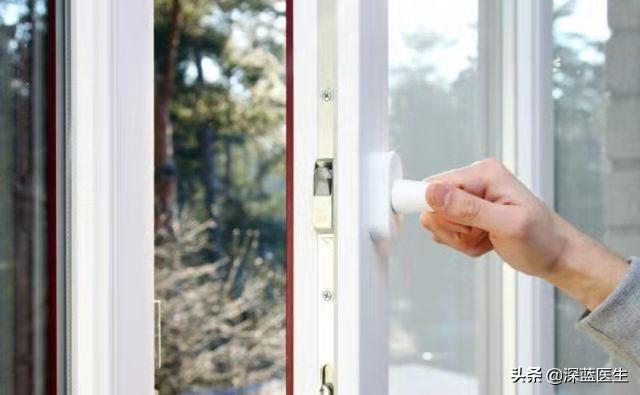
First of all, the present judgment of some experts that there is "aerosol transmission" is a kind of speculation rather than a "conclusion" based on scientific facts. The statement made by the CCDC experts that "there is no evidence yet to show that the new coronavirus is transmitted through aerosols" is a scientific judgment based on current factual evidence.
From a practical point of view, it is prudent to protect against "possibilities". Particularly in places such as intubation in hospitals, it is essential to protect health care workers in accordance with the standards for protection against aerosol transmission.
The concern is: what should I do in case the virus can be spread through aerosols?
Two conditions need to be met simultaneously for a virus to infect a person: the virus remains viable to infect a person, and the concentration of the virus is sufficiently high.
There are two key points for the public:
1. In well-ventilated places, the aerosol formed is quickly diluted with the flow of air. The farther it drifts, the more it is diluted and the lower the concentration.
2. The coronavirus is not very survivable. It is encased in an outer coat that contains several proteins. These proteins are indispensable for it to infect the host - if they denature and lose their natural configuration, the virus may also lose its ability to infect. From the information available now, the fact that it can be killed in 30 minutes at 56 °C suggests that these proteins are not very stable and can easily lose their activity. The droplets in the aerosol-forming droplets are very small, so small that they are not much bigger than the virus. When a virus is in such a small droplet, it is at the interface of air and water. The proteins on the virus molecule may be denatured by the interfacial effect and thus lose their ability to infect. In other words, an aerosol drifting in the distance, even if it contains a virus, is already a "dead virus".
Based on the above two points, the CCDC experts consider it more reasonable to say that "there is no evidence that the novel coronavirus is transmitted through aerosols". Moreover, the likelihood of this mode of transmission is very low indeed.
For the general public, it is sufficient to follow the previously recommended precautions for protection, ie:
1. Early detection and isolation
2. Try not to go to places where people gather;
3. If you have to go, wear a mask;
4. Try not to touch utilities with your hands or touch your eyes, nose or mouth;
5. Wash your hands frequently, especially immediately after touching public facilities.
No need to panic, just be yourself. #The war on plague will be won.
Thanks for the invitation!
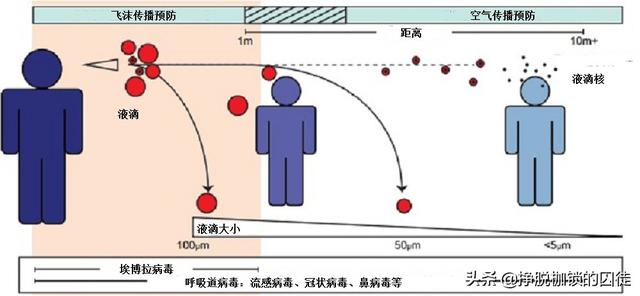
What do you think of the response of the CCDC experts that there is no evidence yet to support aerosol transmission as the main mode of transmission of neococcal pneumonia?

On February 8, 2020, at a press conference on the new coronavirus outbreak held by the Shanghai municipal government, a health prevention expert said:
The main modes of transmission of pneumonia in novel coronavirus infections that can be identified are direct, aerosol, and contact.
This expert's pronouncement caused a furor.
There is widespread public concern about the "official confirmation" that the new coronavirus can be transmitted by aerosols.
And what the respondent finds even more noteworthy is that this expertAerosol transmission is directly considered as the primary mode of transmission ahead of contact transmission.
February 9, 2020 PM.State Council Joint Prevention and Control MechanismThe press conference held at theFeng Lusao, a researcher at the Chinese Center for Disease Control and Prevention, makes the opposite claim:
Currently, the most important modes of transmission of novel coronaviruses are droplet and contact transmission, and there is no evidence of transmission of neocoronaviruses via aerosols.
The expert further explained:
Aerosol transmission refers to the nuclei composed of proteins and pathogens that are left over from the loss of moisture during air suspension of droplets, forming droplet nuclei that can float to long distances in the form of aerosols, causing long-distance transmission.
Novel coronaviruses can be transmitted by respiratory droplets, which travel a short distance, usually within 1-2 meters, and do not float in the air for long periods of time. Novel coronaviruses are generally not found in the air under routine ventilation.
So, is the new coronavirus transmissible via aerosol or not?
What is the significance of whether or not it is transmitted via aerosols?
Is aerosol propagation equivalent to airborne propagation?
The next words of the respondent may attract taunts such as "you're better than the experts, go ahead".
However, based on the principle of seeking truth from facts, we should still be truthful.
What is aerosol dispersal?
We know that respiratory infections are spread primarily through droplets of respiratory secretions expelled from the body through sneezing, coughing, talking, and airflow from breathing.
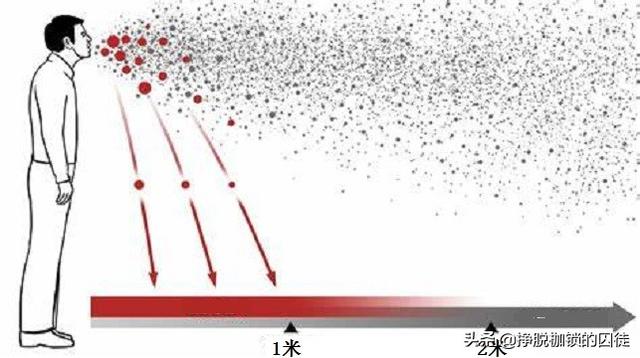
These droplets have large and small diameters, and the diameter size is directly related to the propagation distance and the adsorption of the particles.
Large droplets travel close together, settle easily, and are easily adsorbed on the surface of an object; conversely, small droplets do not settle easily and are not easily adsorbed.
When the diameter of particles is small enough to settle very slowly in the air and can be suspended for long periods of time, or even not settle at all, such a cluster of particles forms theaerosol。
As for the size of aerosol particle diameter, there is no absolute standard, it is generally believed that particles smaller than 5~6μm form aerosols, and particles smaller than 3μm do not settle.
As for the sources of particles that can form aerosols, there are two main types:
Droplets of small diameter produced directly by the respiratory tract. In general, sneezing, coughing, and especially medical maneuvers that stimulate choking and phlegm production, tend to produce large quantities of aerosol droplets;
Dehydration of droplets results in the formation of dry particles of secretions and viruses, known as "droplet nuclei". It is generally accepted that the diameter of a dehydrated droplet can be doubled.
What is the significance of aerosol propagation?
The significance of aerosol propagation is twofold:
Long-range propagation, mainly aerosols formed by droplet nuclei
As mentioned above, aerosols can be suspended in the air for long periods of time without settling, and the viruses in them can then be spread over greater distances.
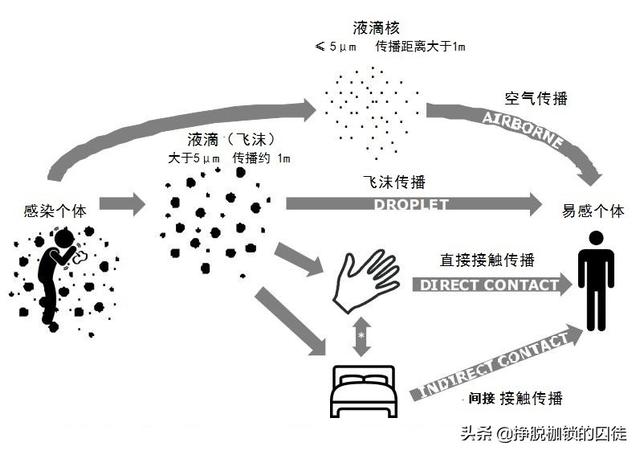
Theoretically, respiratory infections can be transmitted by droplets (direct transmission of large droplets), contact transmission and aerosols.
Droplet transmission is generally considered to be within 1 meter; contact transmission is also within 1 meter of the patient's activity.
Therefore, if transmission occurs only through these two routes and not through aerosols, then the only way to become infected is to be in close contact with the patient.
What is close contact?
Close contact, generally defined as:
Care or living with a known sufferer;
or direct contact with respiratory secretions, and/or body fluids (including excretions) of known patients is highly likely.
For example, kissing or hugging, sharing eating utensils, talking in close proximity (within 1 meter), body checking and any direct physical contact between people.
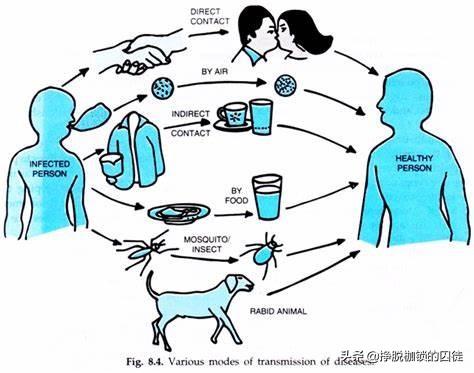
In this way, if a clear history of close contact with the patient can be found for all infected individuals, the disease is considered to be free of aerosol long-range transmission.
In contrast, aerosol long-range transmission can be recognized if there is conclusive evidence of transmission without a history of close contact in a large number of rather than occasionally visible cases.
The impact of protective measures, mainly the formation of tiny droplets directly from the respiratory tractaerosol
As mentioned above, aerosol particles are not readily adsorbed and, therefore, general medical and surgical masks do not fully adsorb them.
In this way, a mask with better protection should be needed when ending up closely with a definite patient.
Medical personnel performing aerosol-generating operations, such as bronchoscopy, intubation and extubation, and cardiopulmonary resuscitation, need to be more closely guarded, wearing medical protective masks and full face shields, and preferably performing the operations in a negative-pressure room.
Is there aerosol transmission of new coronaviruses?
The debate between the two experts on this issue seems to be limited to the long-range propagation of droplet-nucleating aerosols.
Then, with respect to the current published epidemiologic information, which excludes Hubei Province (which cannot be used for this purpose), a history of close (direct) contact with the patient can be found in the vast majority of infected individuals, with only a few cases lacking a history of contact.
Therefore, it should be stated that there is not yet sufficient evidence of aerosolized long-distance transmission of neocoronaviruses.
And the Shanghai expert claimed that "it is currently possible torecognizeTransmission of novel coronavirus infections in pneumoniaprincipalThe statement "direct, aerosol and contact transmission" is indeed not sufficiently substantiated.
More importantly, his listing of aerosol transmission as the primary mode of transmission before contact transmission is, moreover, arguably completely lacking in evidence.
Is aerosol propagation equivalent to airborne propagation?
Airborne Transmission is equivalent to Aerosol Transmission and contains both of the above meanings of Aerosol Transmission.
For example, guidance issued in the United Kingdom regarding the prevention and control of 2019-nCoV infection classifies new coronavirus infection as an airborne high consequence infectious disease (2019-nCoV infection is classified as an airborne high consequence infectious disease).
And the CDC's "Protection based on means of transmission" in which contact, droplet and airborne protection are juxtaposed.
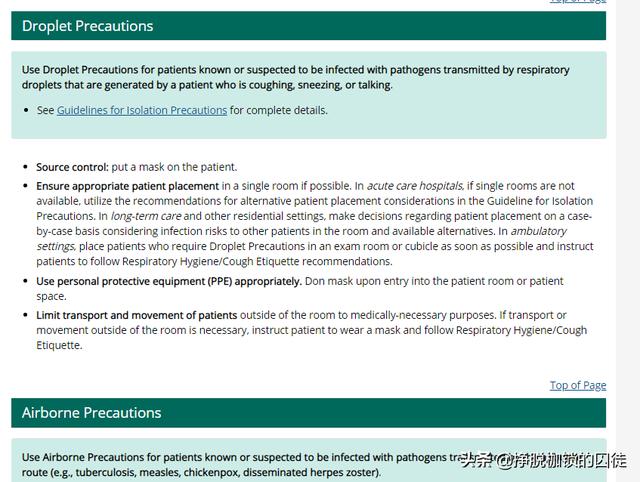
Or some may call the respondent a foreigner.
What the respondent is trying to say is that the current mainstream medical system was indeed established by foreigners and we are just fetishists. For these concepts, naturally, they are also copied, and if there are differences from them, the probability is that we have moved them wrongly or understood them wrongly.
Undetermined regarding aerosol dispersal
Experts say there is no evidence of novel coronavirus transmission through aerosols, so can we be completely reassured? Can we not take precautions against aerosols at all?

Transmission of pneumonia in novel coronavirus infections ↓↓
①Direct transmission refers to the infection caused by the droplets of sneezing, coughing, and talking of the patient, and the direct inhalation of exhaled gases in close proximity;
(ii) Aerosol transmission is the mixing of droplets in the air to form an aerosol that causes infection when inhaled; (to be determined)
③Contact transmission is when droplets are deposited on the surface of an object and contact with contaminated hands is followed by contact with mucous membranes in the mouth, nose, eyes, etc., leading to infection.
What are aerosols?
Stable dispersion of small liquid or solid particles suspended in a gas is called an aerosol, the reason why it is translated as "glue" is about to take the meaning of the particles and the medium of the sticky, difficult to separate.
😣😣我经常有这样的经历↓↓
When you walk in a building or even on the road, it is clear that there is no one around within a few dozen meters, but you can still smell the smoke. What you can smell is the particles of a few hundred nanometers or so that are formed when tobacco is burned. This is aerosol!
😣😣 Excretory activity can also produce aerosols
So 'fecal-oral transmission' is likely to be primarily aerosol and respiratory. Aerosol transmission distances are far beyond imagination Australian equine flu transmission events. The average distance between these horse farms spaced about 1 km, the farthest up to 13 km, while droplet transmission 1-2 meters! Returning to work is coming, Shenzhen should pay special attention to prevent aerosols with long-distance transmission capability
The tragic case of aerosol dispersal
In the SARS outbreak 17 years ago, the tragic case of 321 people infected with the SARS virus and 42 deaths occurred in Amoy Gardens in Hong Kong, and investigations showed that it was the fecal matter containing the SARS virus that was spread by aerosols through sewage pipes.
Although the new coronavirus is not the SARS coronavirus, I think there should be prevention, not afraid of 10,000, just in case, health is more important than anything else, after all, once infected, a whole lot of trouble, life is also threatened!
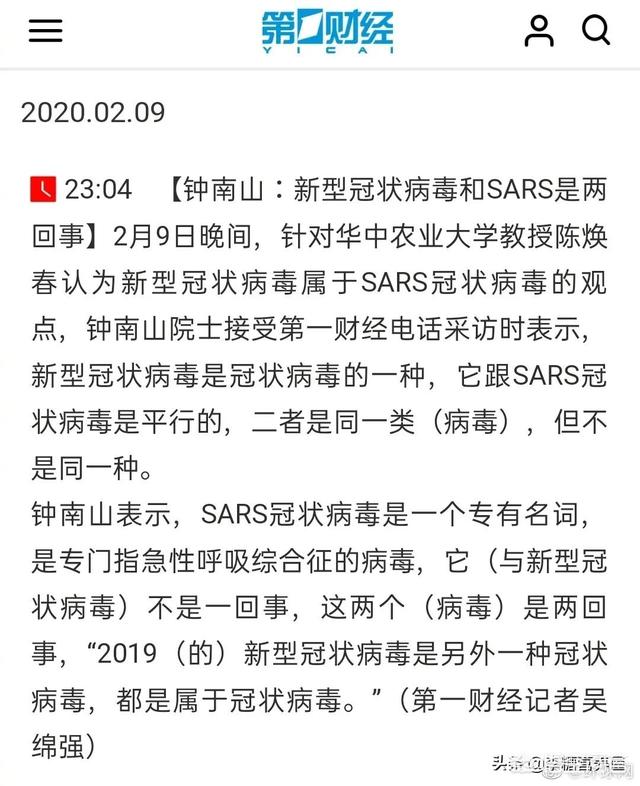
Zhong Nanshan said that the new coronavirus sense is not SARS coronavirus.
2 things that are important to prevent aerosols
A lot of experts science a lot of aerosol prevention, so I'll summarize two points:
1, pay attention to the toilet, restroom toilet when not in use to cover the lid, cover and then flush, and secondly, it is recommended to use a plastic bag filled with water to block the drain, to prevent the spread of fecal orifice.
2, all floor drains, washbasin drain when not in use to block, pay special attention to disinfection.
Of course, aerosol transmission is far less powerful than direct contact transmission, and there is no need for undue panic!
A few days ago, experts in Shanghai concluded that aerosol transmission was definitive, though experts in the country quickly came out and stated that there is no evidence to support aerosol transmission yet.
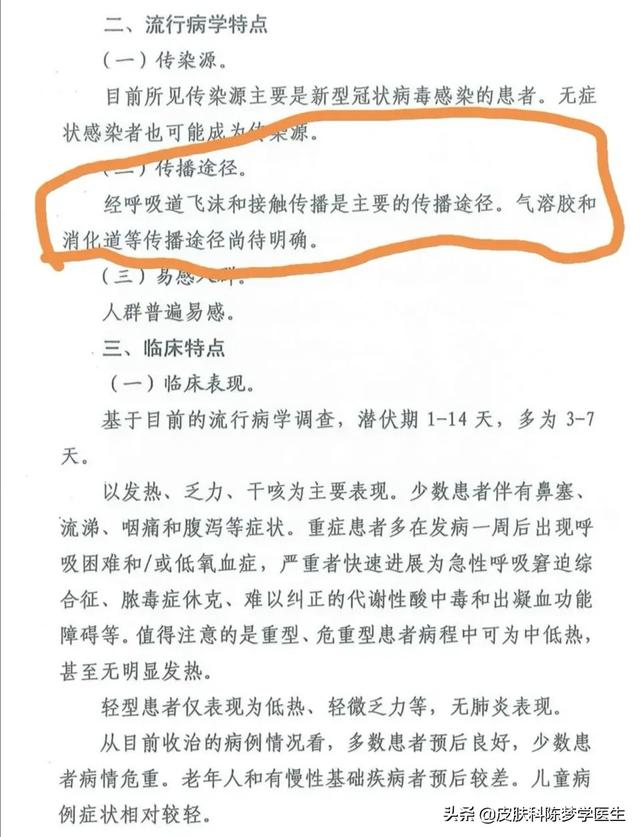
No evidence does not mean no, because that evidence is still being confirmed, and we should still prevent what we should prevent.
When we speak loudly, sneeze, cough, there will be a large number of droplets sprayed, of which the larger droplets will quickly settle, the water in the small droplets quickly evaporate, leaving only the proteins and pathogens floating in the air, i.e., the droplet nuclei, which are aerosols.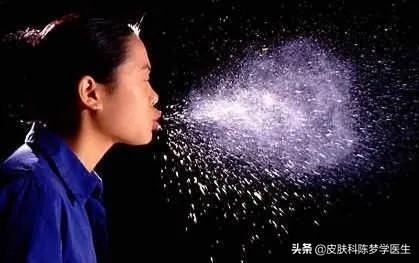
In the open outdoors the aerosol will quickly dissipate and the probability of it being inhaled by us is almost zero, and the occasional few that waft around won't cause illness even if inhaled by an ordinary person because the concentration of the virus is so small that it will be directly killed off by our immune system.
The main thing to watch out for is still densely ventilated spaces, such as elevators, stair corners, hotels, and buses that don't open windows.
Nowadays, we are all more aware of protection, wearing masks, washing our hands regularly, not rubbing our eyes and noses, etc. These measures are also sufficient to prevent the spread of aerosols.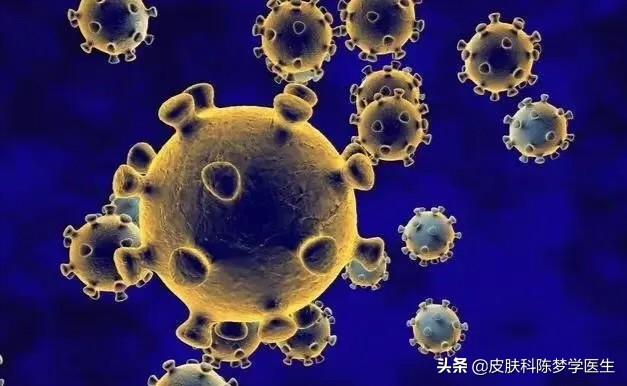
Public toilets flush the larger water pressure will cause excreta aerosols, this should pay attention to, try to go to the public restroom; and our own home sewer floor drains, if you want to prevent can use a small plastic bag filled with water and then pressed on the top, to prevent the gas upward.
It is the healthcare workers who really need to be protected against aerosols, such as the tracheal intubation in the rescue room, testing of patient body fluids in the laboratory, and dental drills in the dentistry department, which generate large quantities of aerosols.
There is no need for the average person to panic too much as long as they follow the previous precautions.
At present, the CDC experts responded that there is no evidence to support that aerosol transmission is the main means of transmission of C pneumonia. As we, the general public, are so concerned about "aerosol transmission", we would like to know: according to the current means of protection, such as wearing masks, can we effectively prevent the spread of aerosols? Is there any new coronavirus in the air? Can we still open windows for ventilation?
It's really just that - wanting to know how to better prevent viral infections and worrying about which detail you're not paying attention to that exposes you to a virus.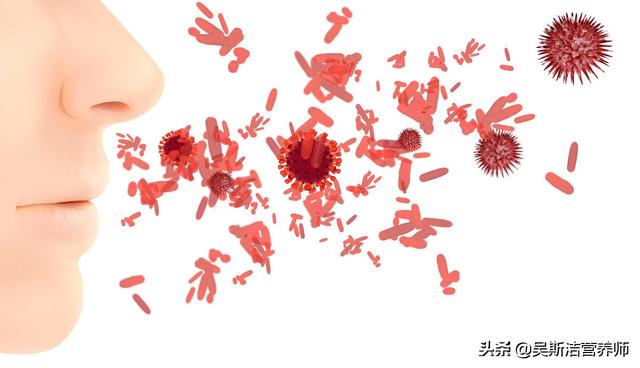
1. What is aerosol propagation?
Aerosol transmission refers to the nuclei composed of proteins and pathogens that remain after droplets have lost moisture during air suspension, forming droplet nuclei that can float to long distances in the form of aerosols, causing long-distance transmission. There is no evidence of aerosol transmission of novel coronaviruses.。
2. What is the current route of transmission of neococcal pneumonia?
According to the New Coronavirus Pneumonia Diagnosis and Treatment Program (Trial Fifth Edition + Amended Edition) released by the National Health Commission on February 8th:Respiratory droplet and contact are the main routes of transmission. The routes of transmission, such as aerosols and the digestive tract, remain to be clarified.。
Wu Zunyou, chief epidemiologist at the CDC, said aerosol transmission is theoretically possible, but it has not yet been proven. "Even if it is, it has a very limited role in spreading the epidemic and is not a major mode of transmission."
3. What can be done to prevent the new coronavirus? Is wearing a mask still useful? Can I open windows for ventilation?
Regardless of the mode of transmission of the new coronavirus, the most important thing we can do is to be clear about effective methods of protection:
1. Rest at home and minimize outside activities
Avoid going to areas where the disease is circulating, do not go to visit friends and relatives and gather for meals, and reduce activities in densely populated public places, especially those with poor air mobility, such as stations and shopping malls.
2. It is recommended to always wear a mask when going out
Wear a medical surgical mask or N95 mask especially in public places or on public transportation.
3. Maintain hand hygiene
Reduce contact with common items and parts of public places; after returning from a public place, coughing and covering your hands, before and after meals, wash your hands with hand sanitizer or soap, running water, or use alcohol-containing hand sanitizers that are free of soap; avoid touching your hands to your mouth, nose, and eyes when you are not sure if your hands are clean; when sneezing or coughing, use elbow clothes to cover your mouth and nose.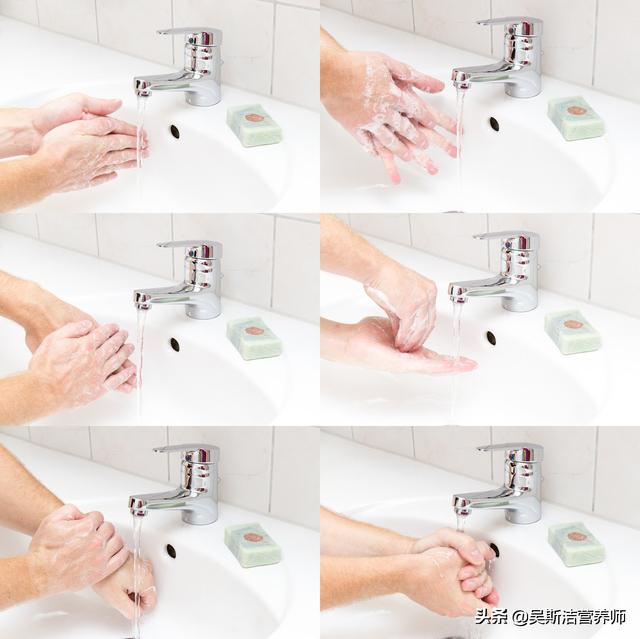
4. Open windows regularly to ventilate the room, do not spit, and keep the home and tableware clean.
According to the response from the Chinese Center for Disease Control: the new coronavirus can be transmitted through respiratory droplets. The droplet transmission distance is very short and will not float in the air for a long time. From this perspective, the novel coronavirus is generally not found in the air under daily ventilation. ThereforeOpening windows at least twice a day is recommended as an effective measure to reduce the risk of infection, but keep warm. For oral and nasal secretions, wrap them in tissue paper and dispose of them in a covered garbage can.
5. Suggest that family members do not share towels and that they use communal chopsticks for meals.
6. Pay attention to diet and nutrition, moderate exercise
Refrain from touching, buying and eating wild animals (i.e., game meat) and try to avoid markets where live animals (poultry, seafood, wildlife, etc.) are sold.

7. Households have thermometers, household disinfectants, medical surgical masks, etc.
8. If you or your family members develop suspicious symptoms, it is recommended that you take the initiative to report them and not to conceal or misreport them.It is also responsible for yourself, your family and your community!
If my sharing is helpful to you, welcome to forward and share, there are doubts you can leave a message in the comments section, weekdays will share health knowledge or nutritional recipes to help improve immunity, and recently will focus on sharing health knowledge related to the new coronavirus (how to prevent, etc.), welcome to pay attention to the headline "Wu Sijie Dietitian" ~!
I wish you all health and peace! Remember to wear a mask when you leave the house, wash your hands regularly, and don't leave the house without a mask!
Aerosol, a colloidal dispersion system formed by small solid or liquid particles dispersed and suspended in a gaseous medium. If these particles are liquid, they are called fog; if they are gas, they are called smoke. The elimination of aerosols, mainly by atmospheric precipitation, or small particles of collision between the merger, cohesion into large particles and precipitation.
In other words, aerosols are a relatively stable state that can float a long way!
In fact, if you pay attention to the news and the "rumors", you will know that if one person in a family is infected with C.pneumonia, the rest of the family can easily be infected, but it is not certain that all of them will be infected. If aerosols are responsible for the spread of the disease, then the whole family will be infected - unless you are able to hold your nose all the time and not breathe. So, to say that aerosol transmission is very unlikely is a euphemism for saying that aerosols do not spread!
The experts are not trying to harm you, in fact they are trying to say something else.
The most common are indirect exposure, the extreme of being sprayed directly in the face by droplets, and inhalation of airborne droplets that have not had time to settle in an enclosed space.
Homework again - which scenario do experts refer to when they say aerosol spreading?
If you answered "inhalation of airborne droplets that have not had time to settle", then congratulations, you got it right!
If droplets that have not had time to settle in the air are considered as "aerosols", then the spread is reasonable and indeed the risk is high!
If a person with the virus coughs hard, sneezes furiously and does not take any measures (wearing a mask and covering his mouth), the sprayed droplets will be suspended in the air, but they will generally settle down in a short time. But if it is in a closed space, people walking around with air turbulence, these droplets suspended in the air will not be able to settle to the ground, can indeed be regarded as "aerosols" and the risk of spreading the virus.
The above situation has been avoided in the epidemic situation. There are other situations: during sputum suction, endotracheal intubation and other operations, the patient suddenly choked, a large number of virus-carrying droplets gushed out, forming a temporary mist full of droplet particles in front of the patient, and the operator of the proximity is easily infected if he/she does not have good protection measures.
The term "aerosol transmission" is probably used by experts to remind doctors, nurses and family members caring for patients to take steps to prevent infection.
On Feb. 9, the NHMRC announced a newIssuance of the Diagnostic and Treatment Program for Novel Coronavirus Pneumonia (Trial Version 5, Revised Edition). It shows that respiratory droplets and contact are the main routes of transmission. The routes of transmission, such as aerosols and the digestive tract, are still "yet to be clarified".
Direct transmission via the respiratory tract refers to the infection caused by the droplets of the patient's sneezing, coughing and talking, and the direct inhalation of exhaled gases in close proximity; contact transmission refers to the droplets deposited on the surface of the object, and contact with the contaminated hand, and then contact with the mucous membranes of the oral cavity, nasal cavity, and eyes, leading to infection.
What is "aerosol" propagation?
The patient sneezes, coughs, speaks, breathes, and other activities will exhale droplets with the virus, of which large droplets, the largest of which can be to the visible part of the naked eye, will quickly settle to the ground.The water in small droplets evaporates and dries up within seconds to form droplet nuclei. The small droplets and droplet nuclei can be collectively called aerosols.
As an example, there is no one within a few dozen meters, but you can still smell smoke. What you smell is the hundreds of nanometers of particles formed after the burning of tobacco. What we call "haze PM2.5 is also a kind of aerosol particles. The smaller the particles, the more pronounced the viscous effect of air. Micron-sized particles in the air like sesame seeds sprinkled in honey, almost not sinking, it is easy to be inhaled by the human respiratory tract.
Droplet nuclei containing the new coronavirus are similar to the scale of particles from burning tobacco. If inhaled, it could lead to infection.
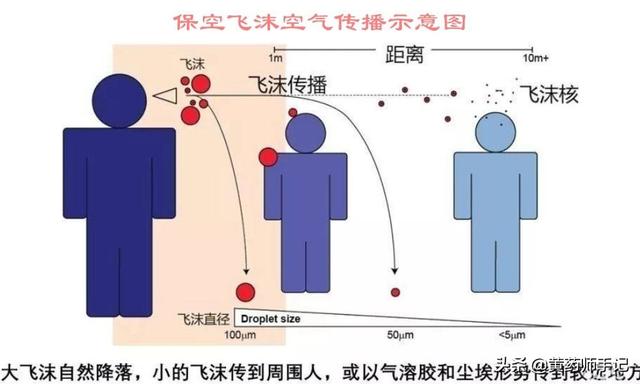
"Are aerosols scary? Why is it?There is no evidence to support aerosol transmission as the primary route of transmission of neocoronitis?
Although aerosols are easy to form, they are not yet so easy to infect people, and have to be extremely high in order of magnitude. Therefore, there is no evidence to support aerosol transmission as the main route of transmission of NCP.
Aerosol transmission is not that scary"Viruses are floating around" is an understatement.Unless your home is in the vicinity of a significant source of very high concentrations of pollution, the general public should continue to follow the previous precautions. Ordinary citizens continue to follow the previous precautions, diligent ventilation, hand washing, wearing masks, do not need to be overly alarmed that this is a "new mode of transmission".
How to prevent the spread of "aerosols"?
1. Indoors should be ventilated. Virus concentrations rise in poorly ventilated settings, and the risk is higher if exposure is long enough.
2, When flushing the toilet, cover the lid before flushing. Fill each floor drain with water and make a good water seal to prevent aerosols from coming up from downstairs, etc.
3, someone's confined space, especially in the elevator, must wear a mask, careful touch (available keys or the back of the fingers at the joints). Elevator rooms are very poorly ventilated and small spaces, and the concentration of viruses in the air can rise.
4. Wash your hands promptly after returning indoors, especially the parts that have touched outside public facilities. Promptly disinfect or clean cell phones, keys and other items that are frequently touched by hands.
In addition to this, wash your hands, scrub regularly, and keep your distance from others.
Anyway, from start to finishPay attention rationally, don't panic emotionally.
Because of the first and second generation specimens, both are contact transmitted. So only the third generation of viruses is still in latency and there is no large-scale outbreak, and the number of research bases is small. So it's impossible to determine the route of aerosol transmission
The assertion that "aerosol transmission is the route of transmission of C pneumonia" was made by Shanghai's epidemic prevention and control experts at a press conference on February 8th. In other words, this is an official assertion, not a rumor spread by an unofficial private organization.
What do we think of the expert's subsequent statement that "there is no evidence to support that aerosol transmission is the main mode of transmission of C pneumonia"? Here we can make a good decision by slightly analyzing the intention of the government departments. There are only two scenarios.
In the first case, the "aerosol transmission is the main means of transmission of the new coronary pneumonia" proposed by the experts on the prevention and control of the epidemic on February 8 was wrong. Therefore, the official follow-up corrected the error.
The second scenario is that aerosol transmission is indeed an effective mode of transmission, which is why Shanghai's outbreak prevention and control experts raised the issue at the Feb. 8 press conference. However, the subsequent discovery may cause panic among the public and bring more losses to the country, so the official re-introduced "there is no evidence to support that aerosol transmission is the main way of the new coronary pneumonia".
To sum up, in either case, I personally think that since the experts have mentioned the assertion of "aerosol transmission", there should be some truth in it. But it may not be as serious as we think. In any case, for the sake of your and your family's health, I suggest that you follow the measures proposed by the CDC to take close precautions.
I hope the epidemic will get better soon!
I'm 0Watson0, feel free to leave a comment and correct me.
This question and answer are from the site users, does not represent the position of the site, such as infringement, please contact the administrator to delete.